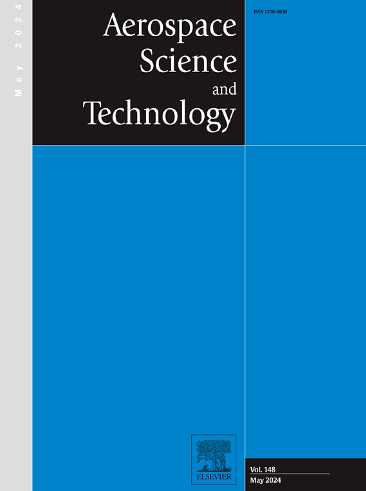Efficient modal parameter identification using DMD-DBSCAN and rank stabilization diagrams
IF 5
1区 工程技术
Q1 ENGINEERING, AEROSPACE
引用次数: 0
Abstract
Modal parameter identification of aerospace structures, particularly improving the efficient using time-domain vibration responses, is currently a topic of great interest in structural dynamics. Data-driven Dynamic Mode Decomposition (DMD) technique in fluid dynamics has shown good potential for identifying the flow mode. In this respect, there have been a few studies on the application of DMD technique in structural dynamics. This paper proposes an efficient structural modal parameter identification method that combines the DMD technique and Density-based Spatial Clustering of Applications with Noise (DBSCAN) algorithm, called the DMD-DBSCAN method. Combined with the proposed rank stabilization diagram, the spurious modes produced by the DMD technique can be effectively cleaned by using DBSCAN algorithm to obtain the physical modal parameter. A numerical case of a composite wing model is presented to validate the proposed method, particularly when identifying the closely spaced modes. It has been shown that the rank stabilization diagram is more appropriate for DMD technique when compared with the solely existing sampling frequency stabilization diagram. An experiment on an aircraft model with response from three-dimensional optical technique is used to demonstrate the method's ability to deal with real complex structures. Compared with traditional methods, results show that the proposed DMD-DBSCAN method can accurately identify modal parameters of complex structures and has excellent operational efficiency because it is free from high order Hankel matrix construction. The proposed data-driven modal parameter identification method is efficient and promising for analysis of complex structures with large datasets.
求助全文
约1分钟内获得全文
求助全文
来源期刊

Aerospace Science and Technology
工程技术-工程:宇航
CiteScore
10.30
自引率
28.60%
发文量
654
审稿时长
54 days
期刊介绍:
Aerospace Science and Technology publishes articles of outstanding scientific quality. Each article is reviewed by two referees. The journal welcomes papers from a wide range of countries. This journal publishes original papers, review articles and short communications related to all fields of aerospace research, fundamental and applied, potential applications of which are clearly related to:
• The design and the manufacture of aircraft, helicopters, missiles, launchers and satellites
• The control of their environment
• The study of various systems they are involved in, as supports or as targets.
Authors are invited to submit papers on new advances in the following topics to aerospace applications:
• Fluid dynamics
• Energetics and propulsion
• Materials and structures
• Flight mechanics
• Navigation, guidance and control
• Acoustics
• Optics
• Electromagnetism and radar
• Signal and image processing
• Information processing
• Data fusion
• Decision aid
• Human behaviour
• Robotics and intelligent systems
• Complex system engineering.
Etc.
 求助内容:
求助内容: 应助结果提醒方式:
应助结果提醒方式:


